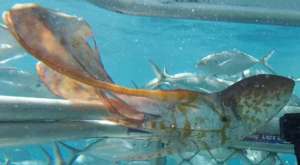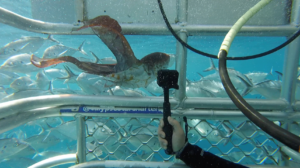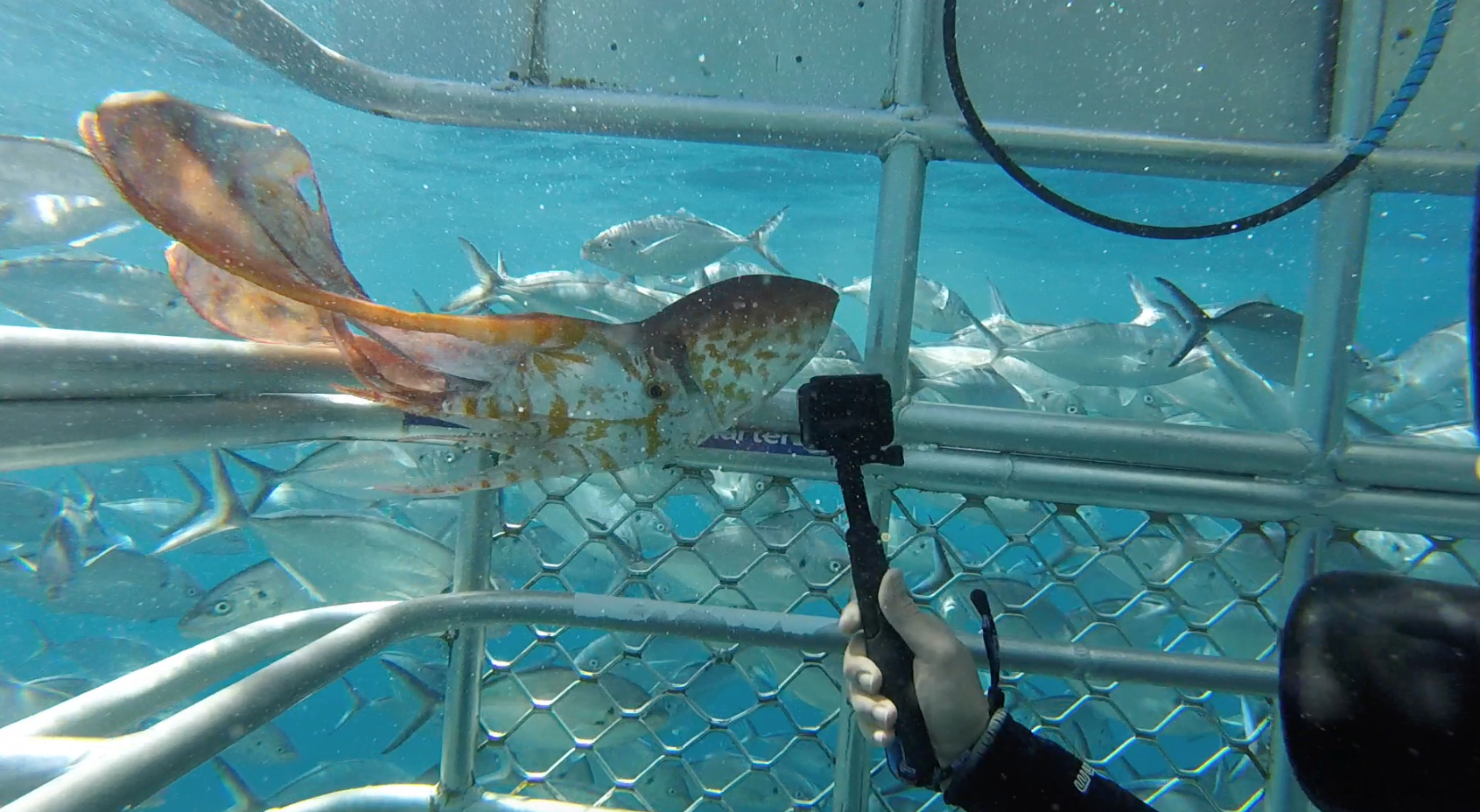There have been a couple of blanket octopus sightings recently. Jacinta Shackleton filmed one whilst snorkelling in the Great Barrier Reef. According to the Twitter post, “This species of pelagic octopus is rarely encountered and will spend its entire lifecycle in the open ocean. The first live male was only sighted in 2002!
Two divers have since sighted a blanket octopus in Queen Charlotte Sound, New Zealand. Shawn Purser and Don MacDonald were spearfishing together in a competition when they saw a female blanket octopus.
My article about a South Australian sighting 4 years ago didn’t get the same publicity. The blanket octopus, Tremoctopus violaceus reported how Andrew Wright, General Manager for Calypso Star Charters, had sent us some photos of what appears to be a female blanket octopus. It had swum into Calypso Star Charters’ shark viewing cage at the North Neptune Island marine park on Good Friday 2018.

A close-up shot of the female blanket octopus
(Photo courtesy of Andrew Wright/Calypso Star Charters)
(According to “A Guide to Squid, Cuttlefish and Octopuses of Australasia” by Mark Norman & Amanda Reid (mlssa No.1051), blanket octopus live in the open oceans of the world. The species belongs to the Family Tremoctopodidae. It is only the female blanket octopus that has long veil-like webs on the upper arms, resembling a blanket. These long, thin webs trail behind the female when she is ‘jetting’.
Male blanket octopus are small in size and have no webs at all. The female reaches a length of about 2 metres, whereas males are only 5-10cm long.
The book goes on to state, “The transparent webs of the front arms are segmented and can be shed like sheets of paper. The live animal has iridescent purple and gold spots within each web segment of unknown function.” The females are dark purple above and cream pink below.
Males store sperm in “a specially modified third right arm” which develops in a pouch. The arm has a bulb-like sperm reservoir on the tip. The arm severs and crawls into the mantle of the female during mating, after which the male dies. The eggs that the female carries are “attached in strings to a small, secreted rod”.
Juvenile (female?) octopus have been found to arm themselves with the stinging tentacles of jellyfishes. Females have water pores on their dark upper surface.)

The female blanket octopus
(Photo courtesy of Andrew Wright/Calypso Star Charters)


Yes, why the discrepancy in publicity? Because most Australians live along the eastern seaboard.
Social media has become a monster.